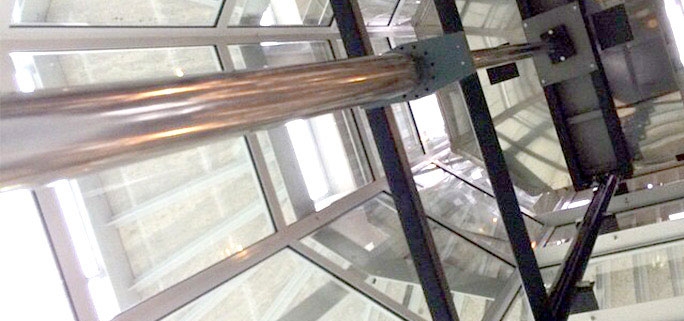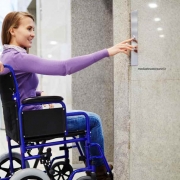HYDRAULIC ELEVATORS
HYDRAULIC ELEVATORS
WHAT IS A HYDRAULIC ELEVATOR?
There are two main types of elevator systems: traction and hydraulic.
Traction elevators utilize steel ropes or belts on a pulley system. Hydraulic elevators are powered by hydraulic jack, which are fluid-driven pistons that travel inside of a cylinder.
HOW DO HYDRAULIC ELEVATORS WORK?
Unlike traction elevators, hydraulic systems don’t use overhead hoisting machinery. Instead, these elevators use the compression of fluids to generate movement.
The elevator cab is lifted by an electric motor that pumps oil into the cylinder to move the piston. Hydraulic elevators also incorporate electrical valves to control the release of oil for a gentle ride.
The fluid needed to power a hydraulic elevator must be oil-based. Vegetable oil or biodegradable oil can be used as environmentally friendly options.
WHAT TYPES OF BUILDINGS USE HYDRAULIC ELEVATORS?
You can find a hydraulic elevator in almost any type of building. However, there are two factors that limit the heights they can travel.
Hydraulic elevators require a substantial amount of energy to raise the cab, which is why they’re not usually found in high-rise buildings. These systems also operate at speeds of 150 ft./min. or less, making them slower than other types of elevators.
Because of these factors, hydraulic elevators are only intended for buildings that are up to seven stories.
WHAT ARE THE DIFFERENT TYPES OF HYDRAULIC ELEVATORS?
Not all hydraulic elevators are created equal! There are several variations that can make each system unique.
Holed Hydraulic
With this type of elevator, hydraulic cylinders extend into the ground and are placed inside of a drilled hole. The car of the elevator is mounted on a piston that travels inside of the cylinder, allowing up to 60’ of travel.
Holeless Hydraulic
Since a drilled hole isn’t necessary, existing buildings or areas where drilling isn’t an option can benefit from a holeless hydraulic elevator. However, these models aren’t suited for more than 40’ of travel.
Roped Hydraulic
Roped hydraulic elevators use cables and a piston attached to a sheave to extend the rise of a holeless hydraulic elevator. Since a rope is holding up the elevator cab, a governor is required. These models are intended for 60’ of travel.
Machine Room-Less (MRL) Hydraulic
In machine room-less elevators, the hydraulic lift mechanisms are located in the hoistway instead of a separate machine room. This maximizes the available space in a building.
WHAT ARE THE BENEFITS OF HYDRAULIC ELEVATORS?
For many types of buildings, hydraulic elevators offer the following advantages:
Quicker to install than other elevator types
Less expensive to install and maintenance for transporting heavy loads
Occupy less space in a building
Option to have machine room-less configuration
WHAT ARE THE DISADVANTAGES OF HYDRAULIC ELEVATORS?
Even with the benefits, there are still a few factors that might not make hydraulic systems the right choice for certain applications:
Only intended for low and mid-rise buildings
Can only travel up to 150 ft./min.
More power requirements than traction elevators
May be a bit noisier than other systems












Leave a Reply
Want to join the discussion?Feel free to contribute!